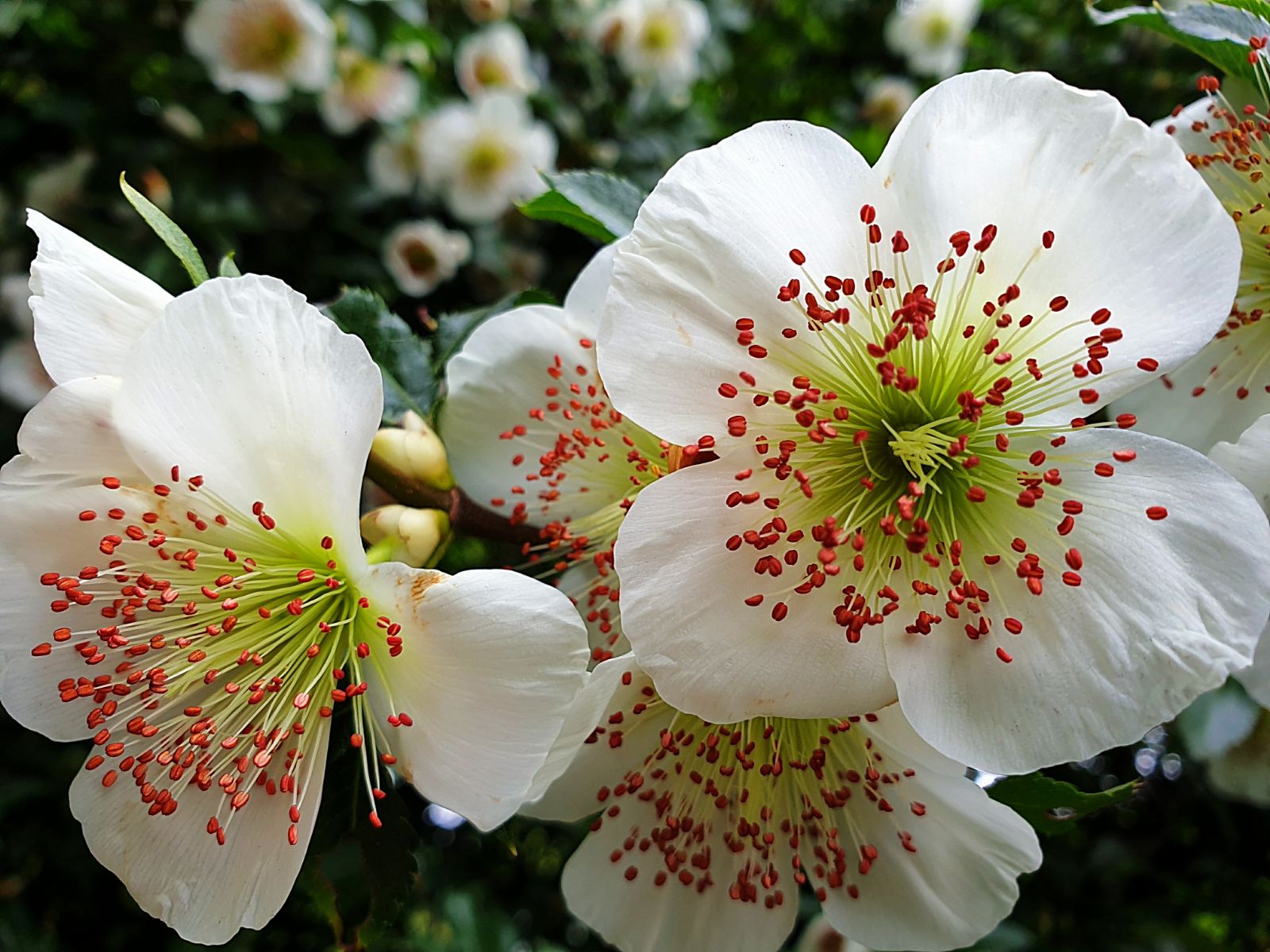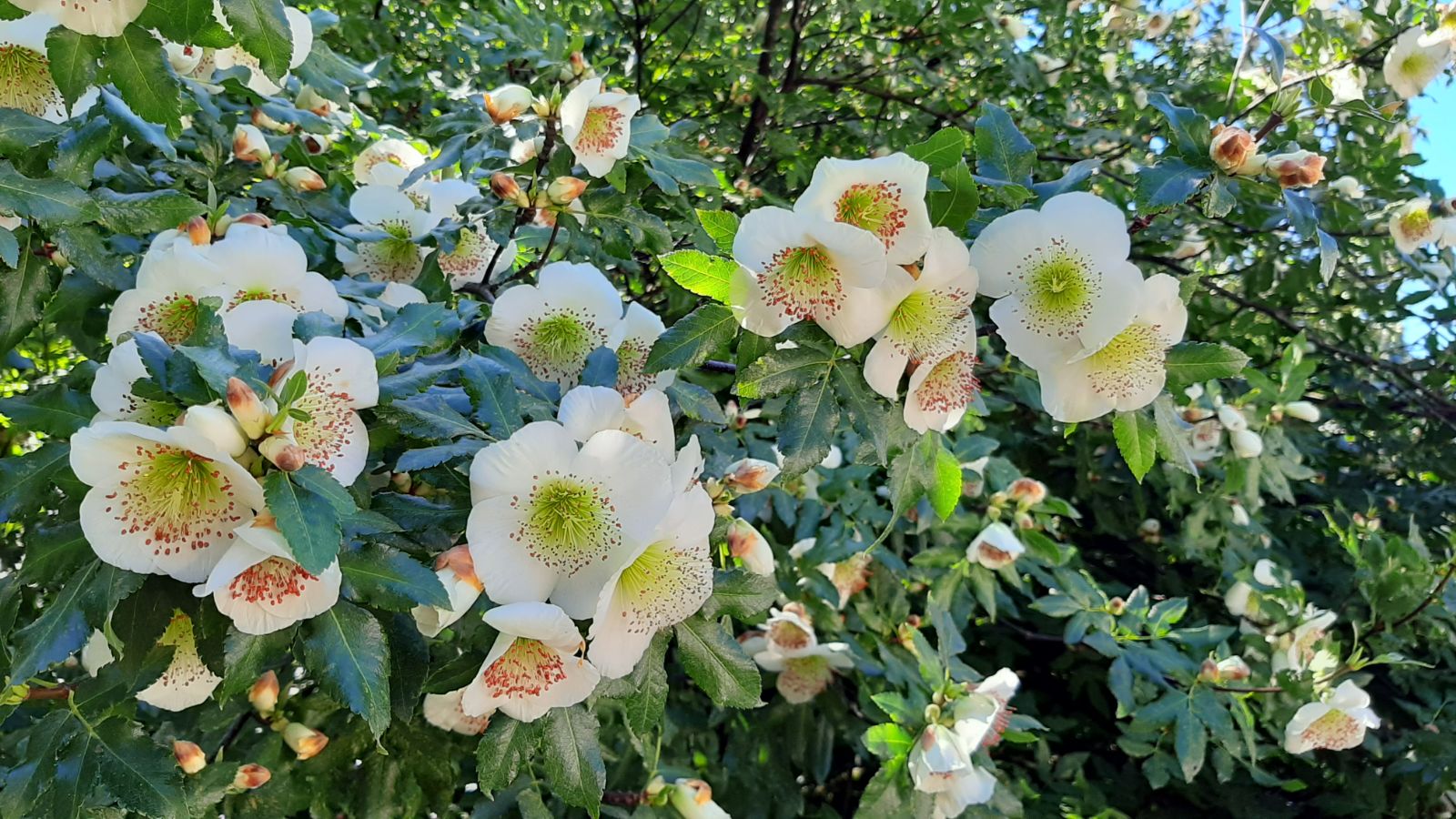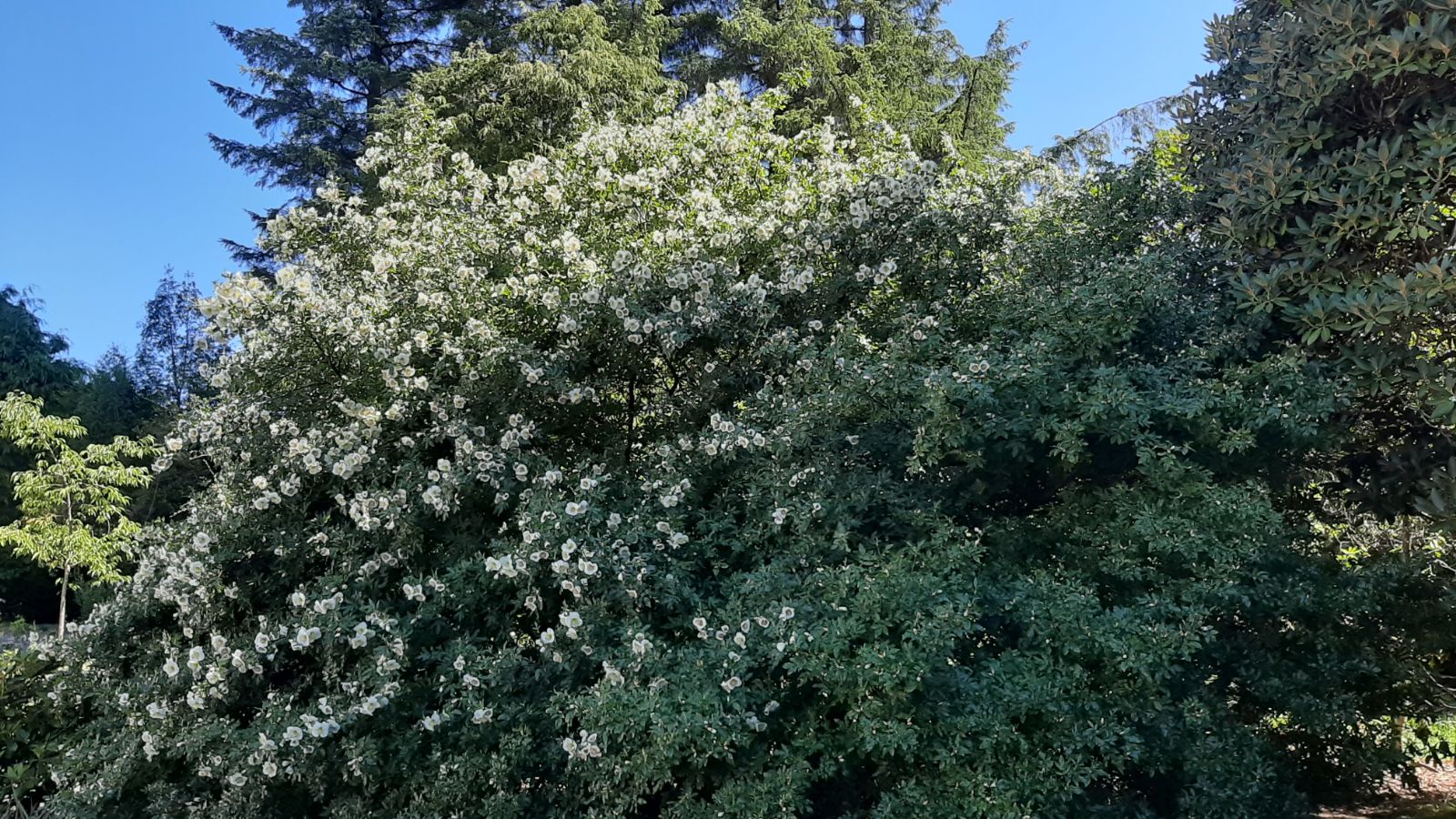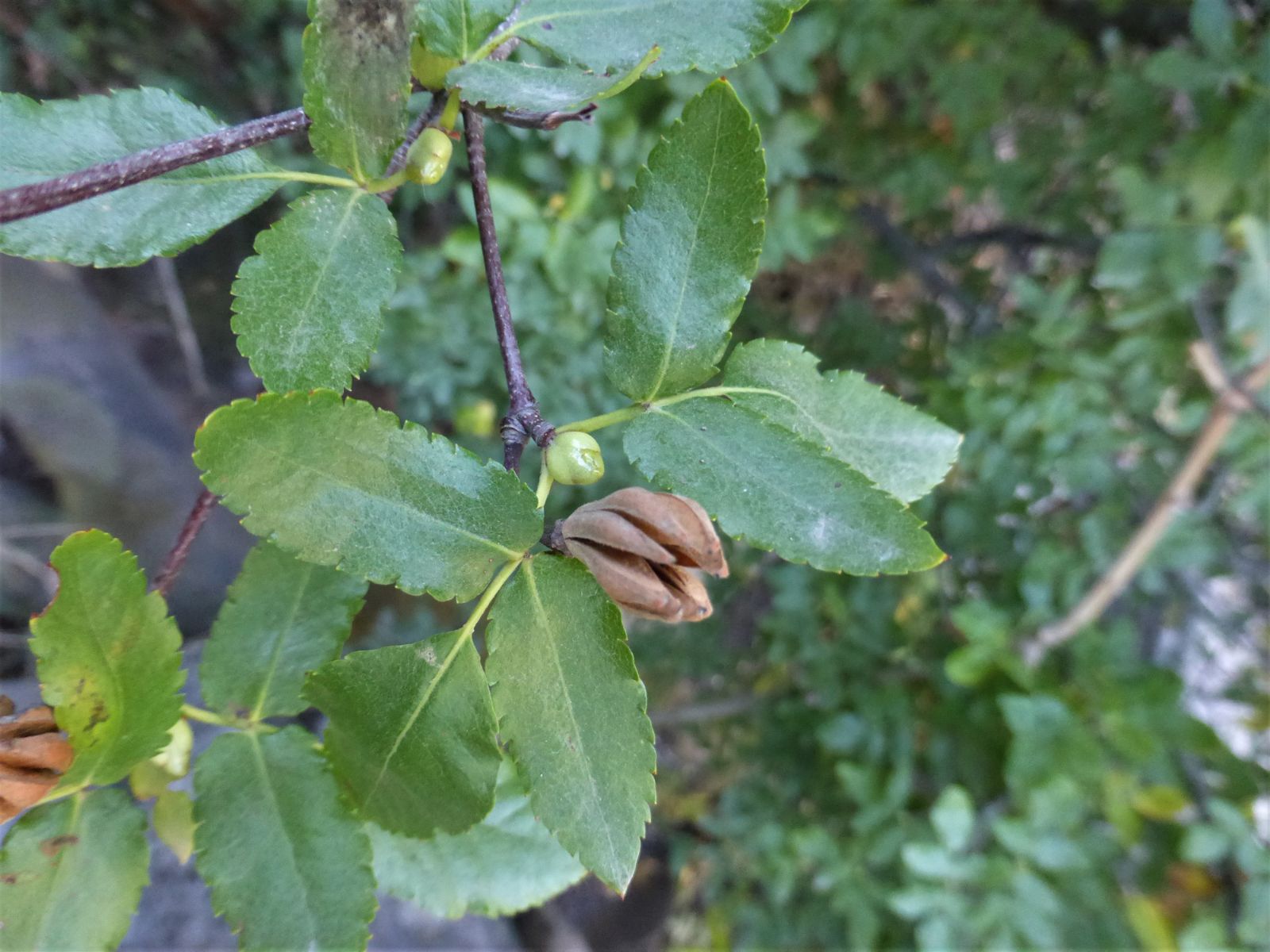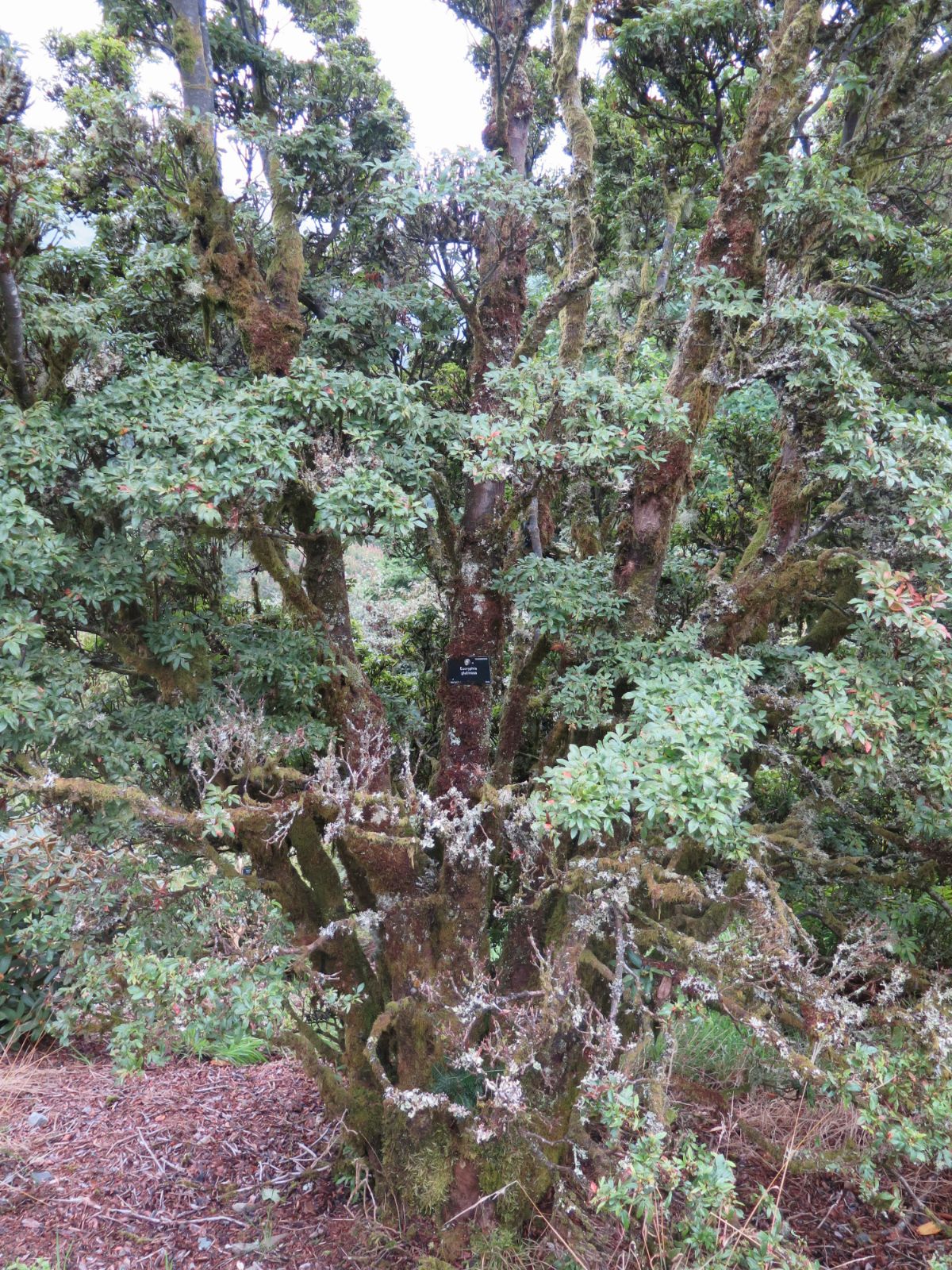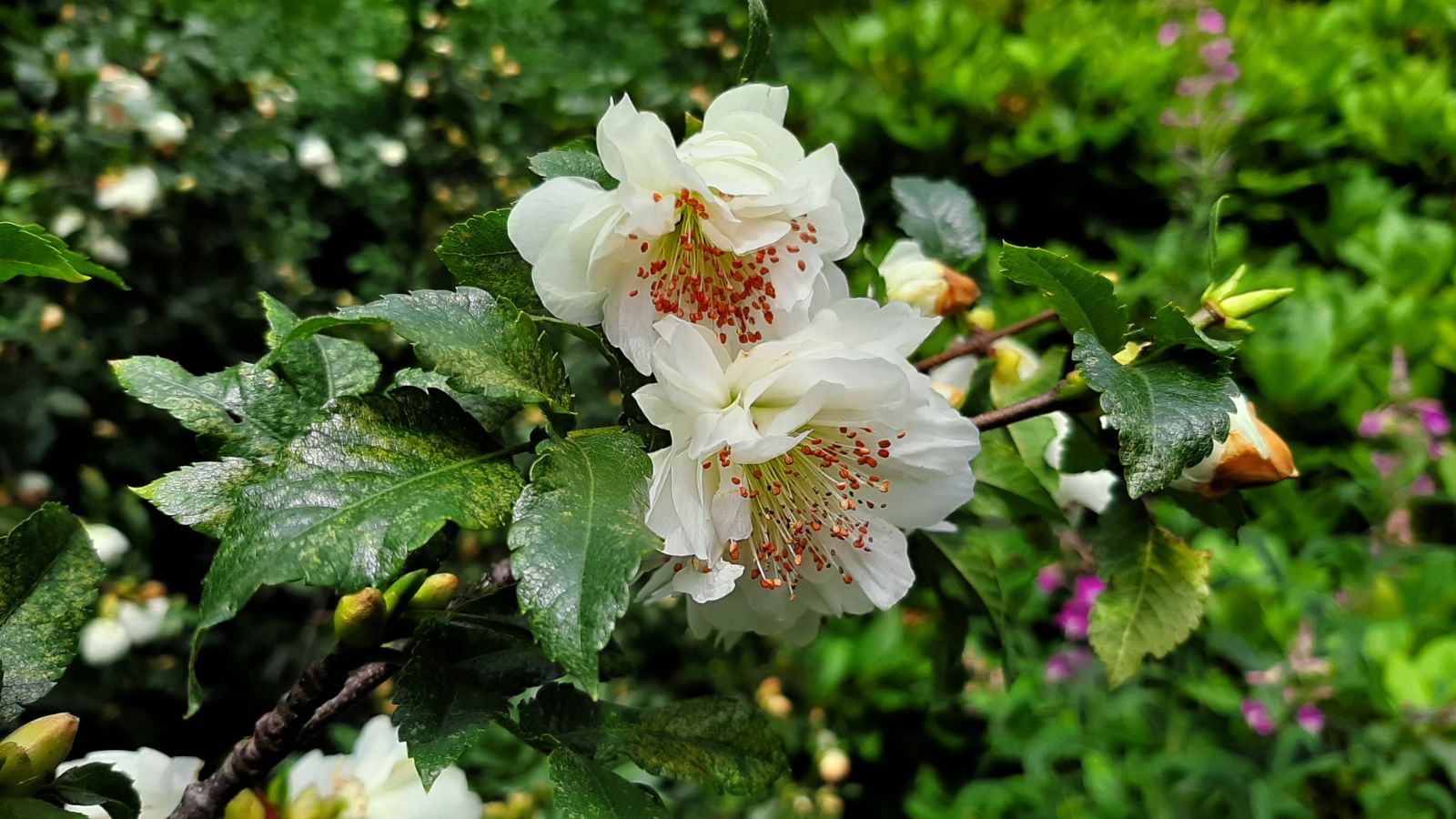Eucryphia glutinosa
Sponsor
Kindly sponsored by
William & Griselda Kerr
Credits
Tom Christian (2021)
Recommended citation
Christian, T. (2021), 'Eucryphia glutinosa' from the website Trees and Shrubs Online (treesandshrubsonline.
A deciduous, large shrub or small tree of variable habit: In its wild state typically to 5–6 m tall; in cultivation up to 14 m tall, to 0.3 m dbh, though more commonly shrubby and multi-stemmed from the base. Young plants typically upright in habit. Foliage borne on shoots clustered toward the end of each internode. Branchlets, petioles and leaves hairy when young, vegetative buds sticky. Leaves pinnate, with one or two pairs of more or less sessile, ovate-oval leaflets and a stalked terminal leaflet, 3–5 cm long, regularly toothed, dark glossy green above, pale green beneath, turning shades of yellow, orange and red in autumn. Flowers borne singly or in pairs terminally and from terminal leaf axils, (4–)5–6 cm across, with densely packed stamens. Fruiting capsule woody, 1–2 cm long. (Bausch 1938; Cullen et al. 2011).
Distribution Chile Maule, Biobío, Araucanía and Ñuble
Habitat Restricted to forest understoreys in riparian habitats at lower elevations; locally abundant as a small shrub at higher elevations. 200–1400 m asl.
USDA Hardiness Zone 8-10
RHS Hardiness Rating H5
Awards AGM
Conservation status Data deficient (DD)
The Chilean endemic Ñirre is the only deciduous Eucryphia. It was first described in 1838 as a new species of southern beech and named Fagus glutinosa, after having been discovered in its deciduous state and without flowers (or presumably fruit) to show its true allegiance. Strangely, some usually reliable reference books including the Hillier Manual continue to perpetuate a myth that Eucryphia glutinosa is evergreen in the wild – this is not true!
It was discovered again c. 1845 by Claude (Claudio) Gay on the banks of the Biobío River, and from this discovery Ñirre’s proper identity became apparent and it was reclassified as Eucryphia. This time lapse may be partly explained by the fact that E. glutinosa is quite rare in the wild. In contrast with the other indigenous Chilean species E. cordifolia, it neither forms especially large trees nor is it a common constituent of the forests it inhabits. Rather, it seems to be an occasional component of riparian woods with a relatively restricted distribution in central-southern Chile (Gardner et al. 2006). During a month-long expedition with the Royal Botanic Garden Edinburgh in 2013, in which a great deal of time was spent in this region, we only chanced upon it once, in the valley of San Fabián de Alico growing by the river in the company of Drimys winteri, Dasyphyllum diacanthoides, Laurelia sempervirens and Lomatia dentata (pers. obs. 2013).
At the time this valley was under imminent threat of being flooded by a new dam for hydro-electric power generation, a fate that has already befallen many similar valleys in the Andes leading to the catastrophic destruction of vast swathes of habitat and populations of many rare and threatened species. Even San Fabián’s designation as a UNESCO biosphere reserve is not enough to stop the ecocide. All these circumstances conspire to make it very difficult to accurately record the original extent, and consequently the extent of decline, in Ñirre populations, causing the current IUCN category for the species to be designated ‘data deficient’.
In cultivation it is a brighter picture. Richard Pearce introduced the species to British horticulture via the Veitch nurseries in 1859. Although it would eventually become well established in gardens it initially proved difficult to propagate, difficult to transplant, and difficult to please generally, being very sensitive until well established and prone to sudden demise (Bean 1981). Somewhat unfairly, E. glutinosa is probably best known as one of the parents of E. × nymansensis which arose in cultivation in southern England in the early 20th century and which is now the most popular Eucryphia for general planting. (The other parent is the other Chilean species E. cordifolia, and it is worth reinforcing a point others have made that the two do not occur together in the wild). It remains the case that E. glutinosa is a difficult species to propagate and establish, but once these hurdles have been overcome it may be expected to form a wide-spreading large shrub or small tree, 3–10 m tall, which will reliably produce masses of white flowers during late summer attracing bees from miles around, before its foliage turns vivid shades of yellow, orange and red in autumn. Perhaps on account of its deciduous nature it is also generally considered the hardiest species, but high altitude provenenaces of E. lucida from Tasmania could probably compete for this mantle.
Exceptional examples include a 14 m tree at Rostrevor House, County Down, Northern Ireland, and 12 m trees at Mount Usher, County Wicklow, and at Hergest Croft, Herefordshire. Sizeable examples in cold gardens include a pair of trees c. 10 m at Howick Hall, Northumberland, one c. 9 m at Keir House near Dunblane, Scotland, and another c. 8 m at Crathes Castle, Aberdeenshire (The Tree Register 2018). There are many dozens of other examples that could be cited from all over the UK and Ireland, but elsewhere definitive records appear to be thin on the ground. Seed was sent from Chile to the USA in 1920 (USDA 1923) but whether this consignment resulted in establishment in collections is not known. Jacobson (Jacobson 1996) suggests that several Eucryphias all became established in the north American horticultural trade shortly after an introduction (presumably from European gardens) in 1937. Today it is cultivated in appropriate climatic zones in North America, for example in Washington State at the Washington Park Arboretum (University of Washington Botanic Gardens 2018), and at Darts Hill Garden Park in Vancouver, Canada (Darts Hill Garden Park 2017).
Spencer (2002) suggests that E. glutinosa, E. cordifolia and their hybrid E. × nymansensis are less common in cultivation in south east Australia than their indigenous cousins, especially the Tasmanian species, which are themselves of outstanding horticultural merit, though the Tasmanian Arboretum’s collection includes E. glutinosa (The Tasmanian Arboretum 2018). The picture is very similar in New Zealand, with the Chilean species tending to be overshadowed by the Australians, although again E. glutinosa does occur in gardens here, for example in Dunedin Botanic Garden. In continental Europe E. glutinosa is widely cultivated but there is scant information available about notable individuals. It is reported, for example, from Arboretum Volčji Potok in Slovenia, Arboretum Grenzenlust in Germany, Hørsholm, Denmark, the Conservatoire Botanique National de Brest, France, the Stavanger Botanic Garden, Norway and from Arboretum Wespelaar, Belgium. It is commercially available from numerous sources across our area.
Plena Group
A name covering double or semi-double flowered forms that arise naturally among plants raised from seed. Some of these are said to resist adverse weather conditions better than the single-flowered type; there are several outstanding examples in the Eucryphia walk at Castlewellan, Northern Ireland (S. O’Brien pers. comm. 2018).
- ‘Daisy Hill’ a particularly good example of this form selected by the Daisy Hill nursery in Newry, County Down, in the 1920s

